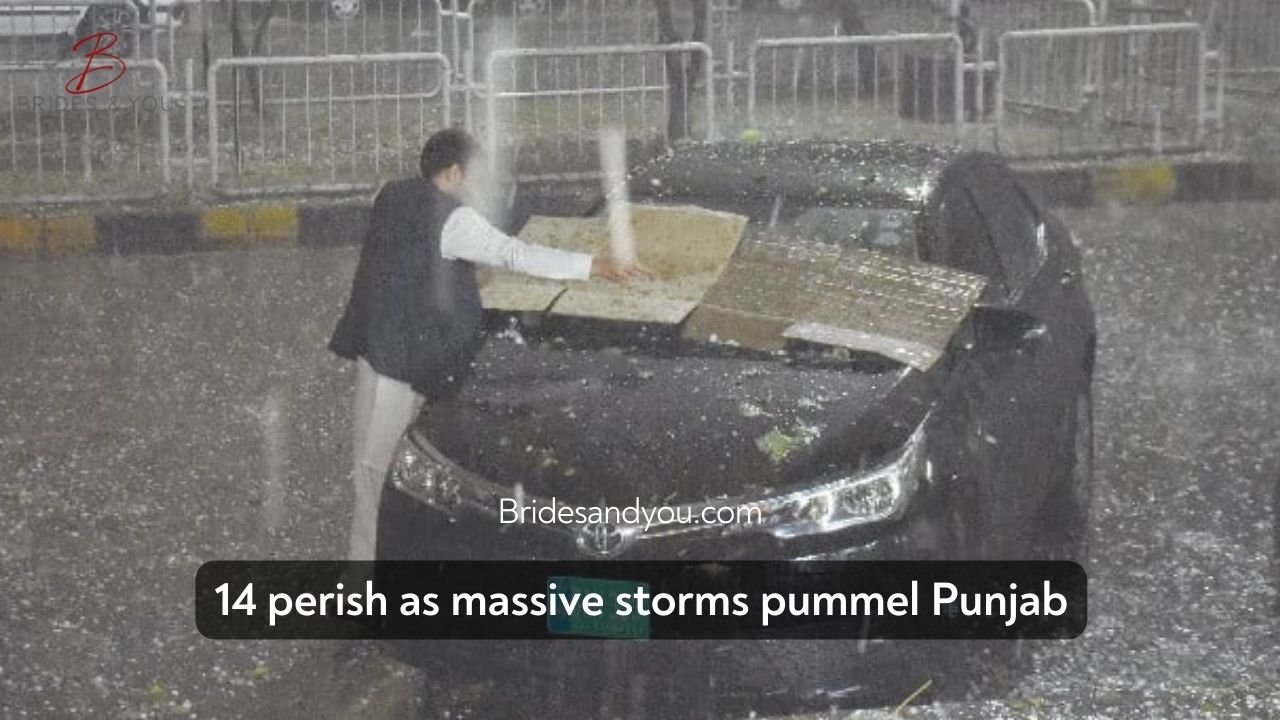Now Reading: Punjab Storm Disaster: Torrential Storms Leave 14 Dead, Flights Disrupted, Power Outages Across the Province
-
01
Punjab Storm Disaster: Torrential Storms Leave 14 Dead, Flights Disrupted, Power Outages Across the Province
Punjab Storm Disaster: Torrential Storms Leave 14 Dead, Flights Disrupted, Power Outages Across the Province

On a stormy Saturday, nature’s fury took its toll on Punjab, Pakistan, leaving behind a trail of destruction. The Punjab storm disaster saw at least 14 people lose their lives and more than 92 individuals sustain injuries, as fierce winds and torrential rains battered major cities across the region. With flights disrupted, power lines torn apart, and emergency alerts issued, the province plunged into crisis.
Fatalities and Widespread Damage Reported
According to the Provincial Disaster Management Authority (PDMA), fatalities were reported from various cities:
- Rawalpindi (1)
- Jhelum (2)
- Sheikhupura (1)
- Nankana Sahib (1)
- Lahore (3)
- Layyah (1)
- Jhang (1)
- Sialkot (1)
Most deaths occurred due to collapsing structures and falling debris. In rural areas, mud houses were particularly vulnerable, suffering major damage. The PDMA confirmed numerous homes were rendered unsafe, adding to the scale of the humanitarian crisis.
Emergency Response and Relief Efforts
Rescue services, including Rescue 1122, sprang into action, as Punjab Relief Commissioner Nabeel Javed ordered all commissioners and deputy commissioners to remain on high alert.
The PDMA Director General Irfan Ali Kathia confirmed that affected families will be compensated under government policy. Emergency operation centers at the district and provincial levels are active for round-the-clock monitoring and assistance.
Kathia urged residents to:
- Avoid unnecessary travel
- Stay clear of damaged buildings and electric poles
- Keep children indoors during storms
- Contact the PDMA helpline 1129 for emergencies
Flights Grounded as Storm Disrupts Air Travel
The Allama Iqbal International Airport in Lahore faced major disruptions:
- Flights to Karachi, Abu Dhabi, and Kuala Lumpur were delayed
- A Karachi-bound flight had to divert to Multan
- Arrivals from Skardu and Guangzhou were canceled
- A flight to Karachi had to return mid-air
Operations resumed once weather conditions improved, but the experience highlighted the fragility of air travel during extreme weather.
LESCO Issues Red Alert Amid Widespread Power Outages
The Lahore Electric Supply Company (LESCO) issued a red alert after the storm severely damaged the power grid.
Field teams were immediately dispatched for emergency repairs.
LESCO CEO Engineer Muhammad Ramzan Butt, along with GM Operations and senior engineers, managed operations from the control room. Material supplies were mobilized from storage, and restoration efforts continued until power returned to all affected households.
Motorway & Road Safety Alert
The Motorway Police issued safety warnings for sections of the M-4, M-5, and National Highway, where heavy winds and showers reduced visibility.
Key areas affected include:
- Pindi Bhattian to Abdul Hakeem
- Multan to Rahim Yar Khan
- Lahore to Chichawatni
Motorists were advised to:
- Drive cautiously
- Avoid speeding
- Maintain safe distance
A public safety campaign is currently underway to educate drivers about storm-safe driving practices.
Khyber Pakhtunkhwa (K-P) Braces for More Storms
The storm’s reach extended to Khyber Pakhtunkhwa, where the PDMA issued an alert forecasting rain and thunderstorms in Chitral, Swat, Mansehra, Abbottabad, Peshawar, Kohat, and Waziristan.
Authorities were instructed to:
- Stay vigilant
- Keep debris clearance equipment ready
- Issue warnings in local languages
Farmers were advised to plan around the weather, and tourists were urged to check weather updates before traveling. The PDMA helpline 1700 remains active.
Islamabad and Rawalpindi: Heatwave Ends with a Storm
The twin cities of Islamabad and Rawalpindi experienced a dramatic shift in weather.
Dark clouds, strong winds, hailstorms, and heavy rain ended an extended heatwave.
Multiple areas experienced power breakdowns, and a rain emergency was declared in Rawalpindi.
Conclusion
The Punjab storm disaster serves as a stark reminder of nature’s unpredictable power. While rescue efforts and relief operations are ongoing, authorities have urged citizens to remain vigilant and prioritize safety. With extreme weather events becoming more frequent, preparedness and quick response systems are more crucial than ever.






















